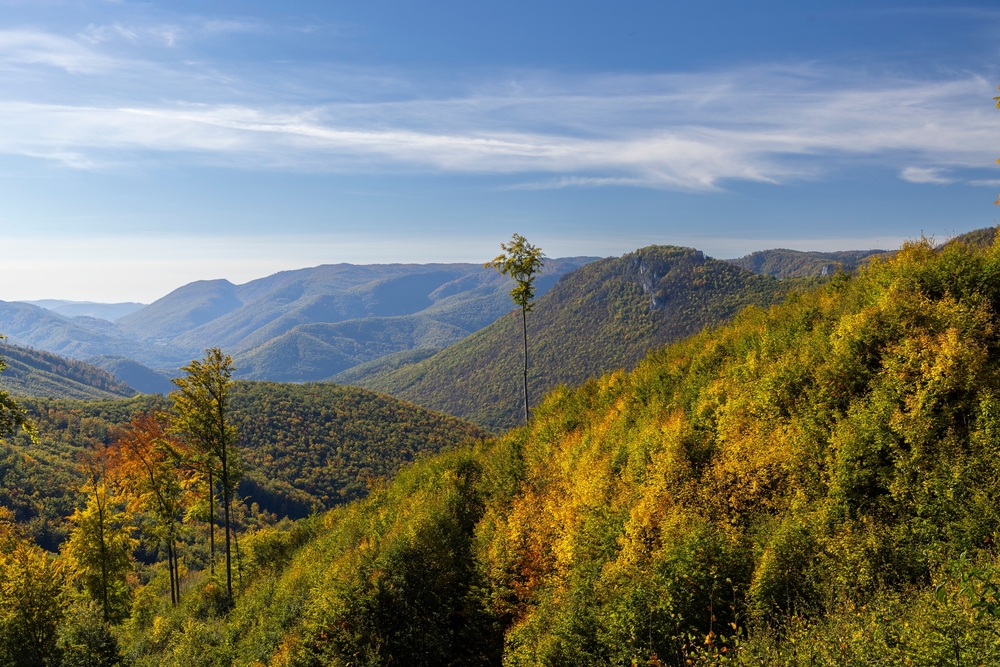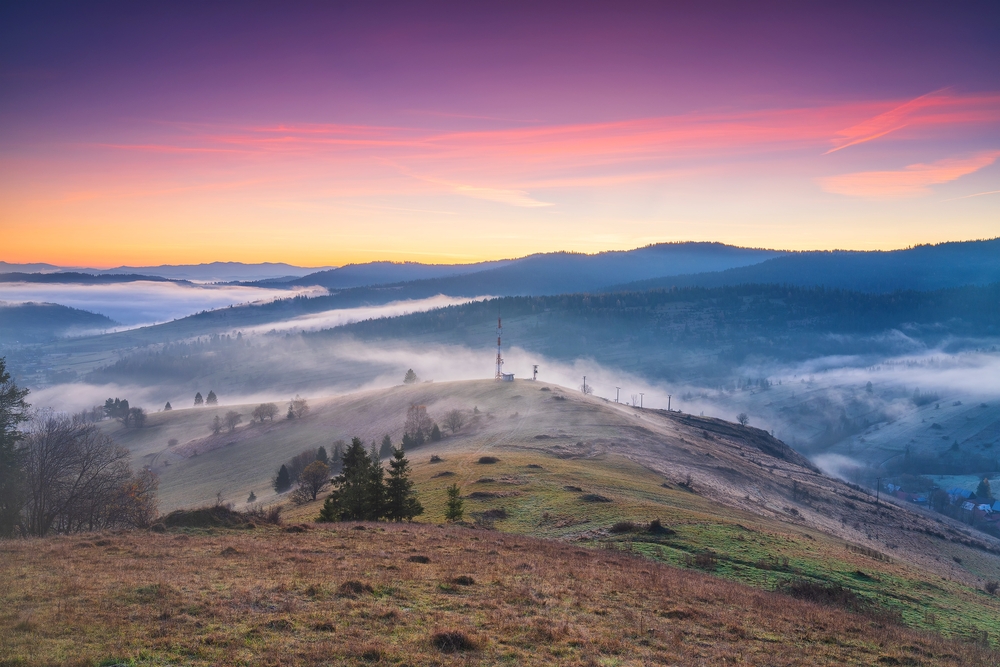Poloniny Overview
Poloniny National Park, known as Národný park Poloniny in Slovak, is a protected area in the northeastern corner of Slovakia, near the borders of Poland and Ukraine.
Covering approximately 116.5 square miles (301.1 square kilometers), it is the largest national park in eastern Slovakia and forms part of the Carpathian mountain range. The park is renowned for its pristine forests, rolling meadows, and rugged mountain landscapes, making it one of the most ecologically significant areas in Central Europe.
The terrain of Poloniny National Park is characterized by its low-lying Carpathian peaks, with the highest point being Kremenec (1,221 meters or 4,006 feet), which marks the tripoint border of Slovakia, Poland, and Ukraine. The park is home to expansive beech and fir forests, some of which are part of the Primeval Beech Forests of the Carpathians, a UNESCO World Heritage Site.
These ancient woodlands boast towering trees that have remained largely untouched for centuries, providing a rare glimpse into Europe’s primeval landscapes. The park’s diverse flora includes rare plant species such as Edelweiss (Leontopodium alpinum), European yew (Taxus baccata), and various orchid species, thriving in its undisturbed environment.
Poloniny National Park is a haven for wildlife, with some of the most elusive and endangered species in Europe making their home here. Large mammals such as the European bison (Bison bonasus), Eurasian lynx (Lynx lynx), brown bear (Ursus arctos), and gray wolf (Canis lupus) roam the dense forests, while red deer, wild boar, and European wildcats also contribute to the park’s biodiversity.
Bird enthusiasts can observe rare and protected species, including the golden eagle (Aquila chrysaetos), Ural owl (Strix uralensis), and black stork (Ciconia nigra). The park’s remoteness and low levels of human disturbance make it one of the last refuges for these species in Central Europe.
One of the park’s most fascinating attractions is the Stužica Primeval Forest, part of the UNESCO-listed beech forests, where visitors can walk among centuries-old trees in one of the most unspoiled ecosystems in Europe. The park is also famous for its dark sky reserve, making it a premier location for stargazing.
Due to minimal light pollution, it offers some of the best opportunities for astronomical observation in Slovakia. Additionally, visitors can explore traditional Rusyn villages, where wooden churches, including the Church of St. Nicholas in Ruský Potok, showcase the region’s unique cultural heritage.
Outdoor enthusiasts can experience the park through various activities, including hiking, cycling, and wildlife watching. Popular trails lead to Kremenec, offering breathtaking panoramic views of the surrounding Carpathians.
The park’s extensive network of trails also connects with Poland’s Bieszczady National Park and Ukraine’s Uzhanskyi National Nature Park, allowing for cross-border trekking adventures. During winter, the region transforms into a serene landscape for snowshoeing and cross-country skiing.
Poloniny National Park faces conservation challenges, particularly due to illegal logging, habitat fragmentation, and the decline of large carnivores due to human activity. However, ongoing conservation efforts, including the reintroduction of European bison and strict forest protection measures, have seen notable successes.
Collaborative cross-border conservation initiatives with Poland and Ukraine have helped maintain biodiversity and promote sustainable ecotourism. The park remains a crucial sanctuary for Europe’s dwindling old-growth forests and endangered wildlife.















































































